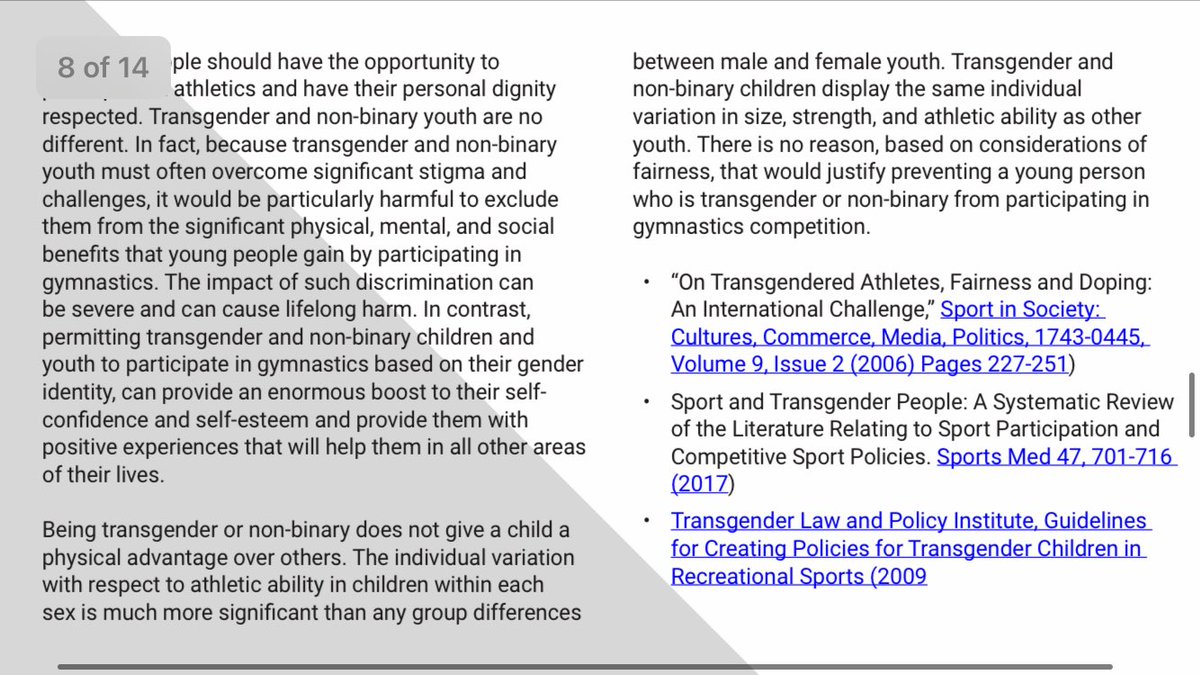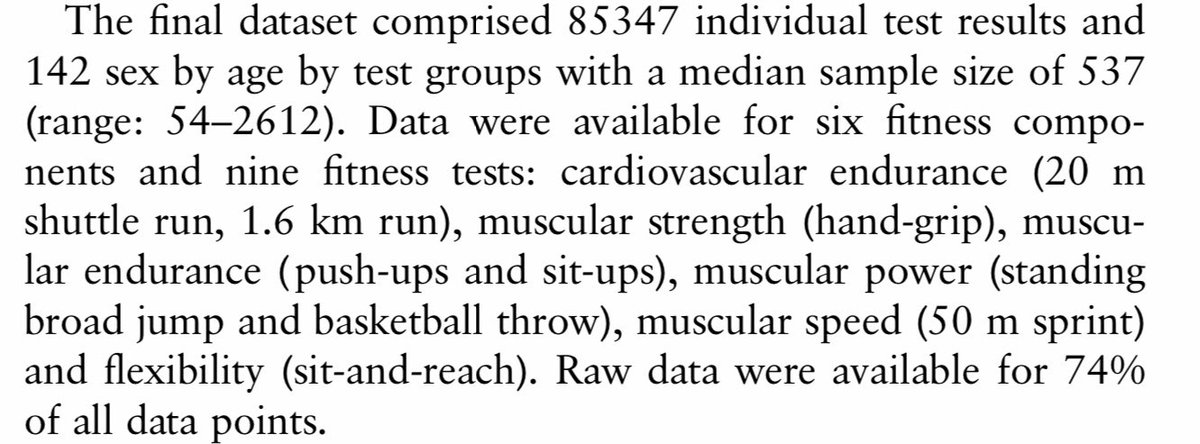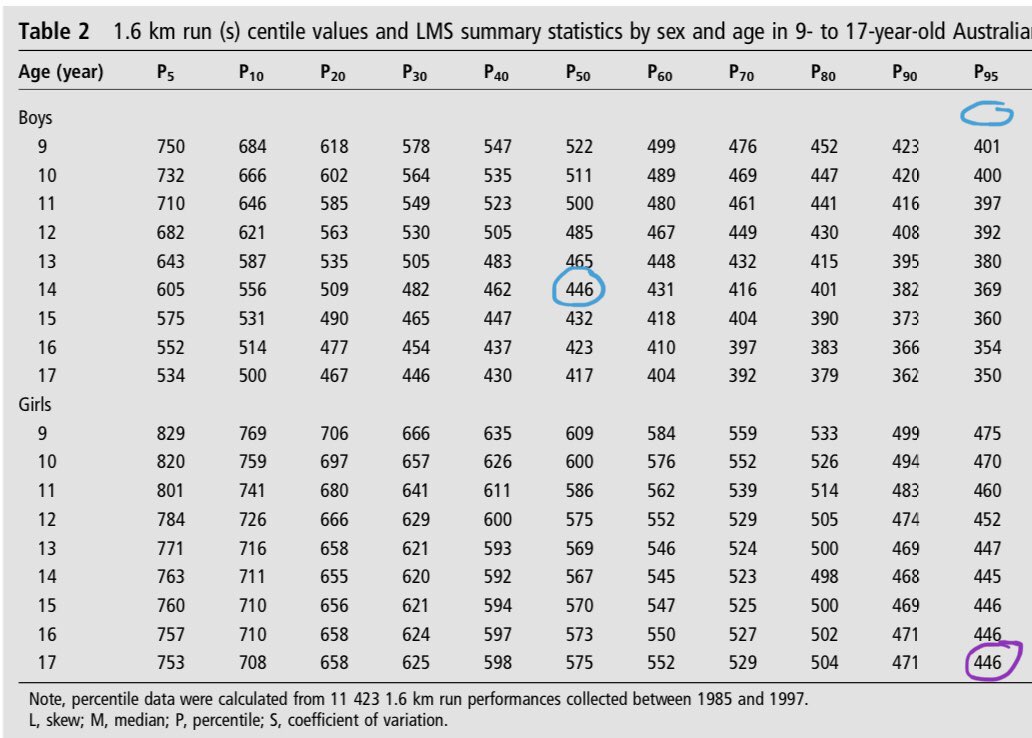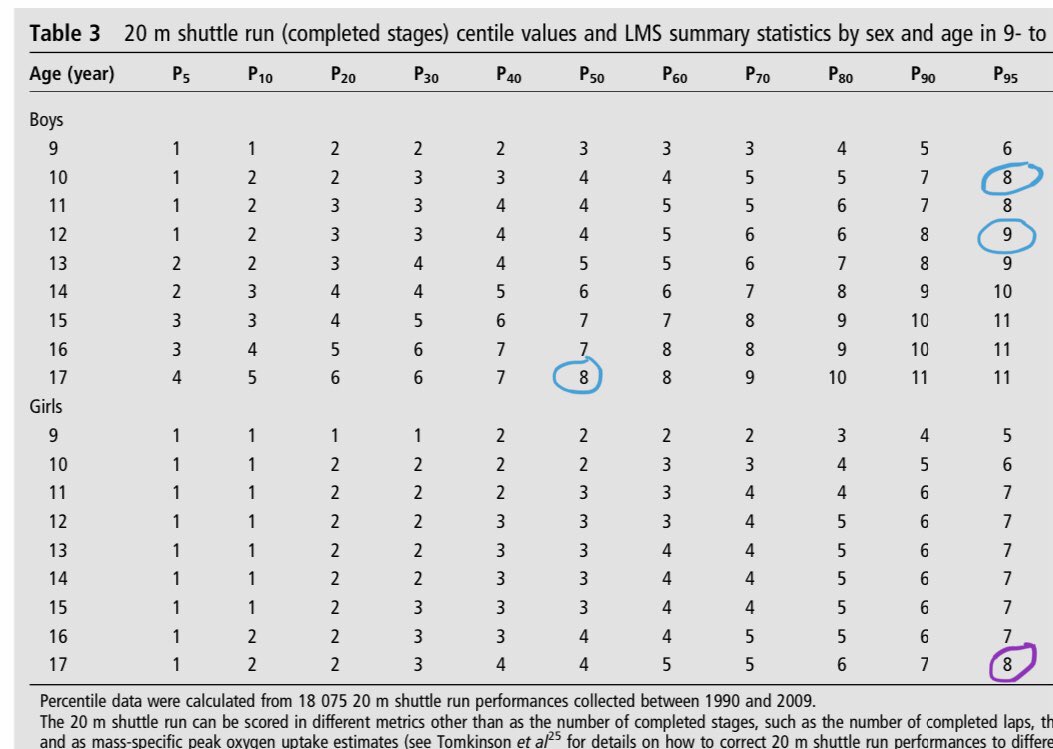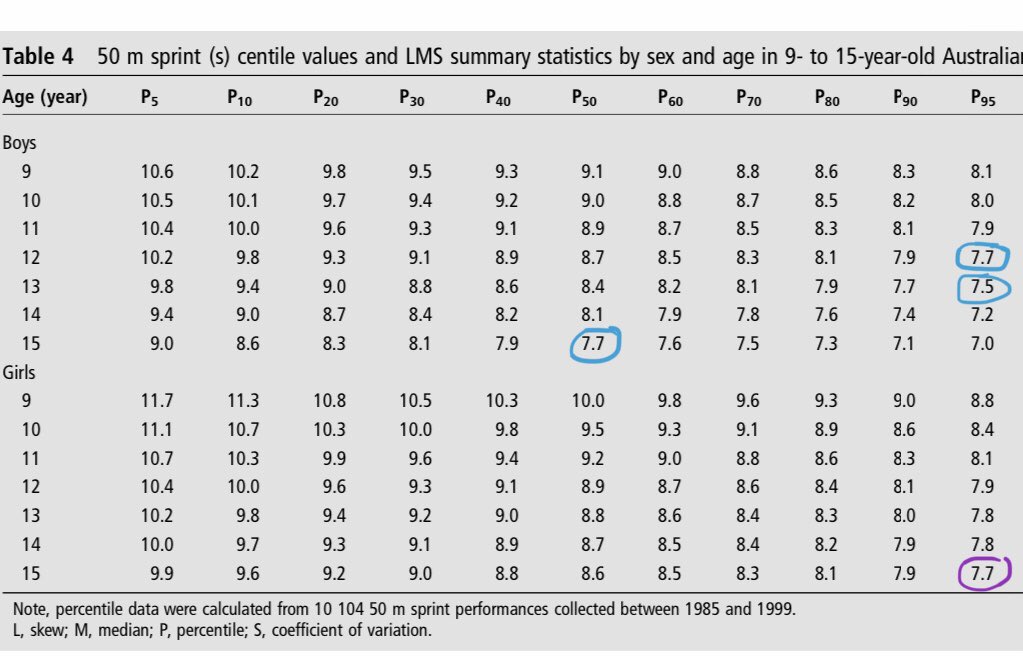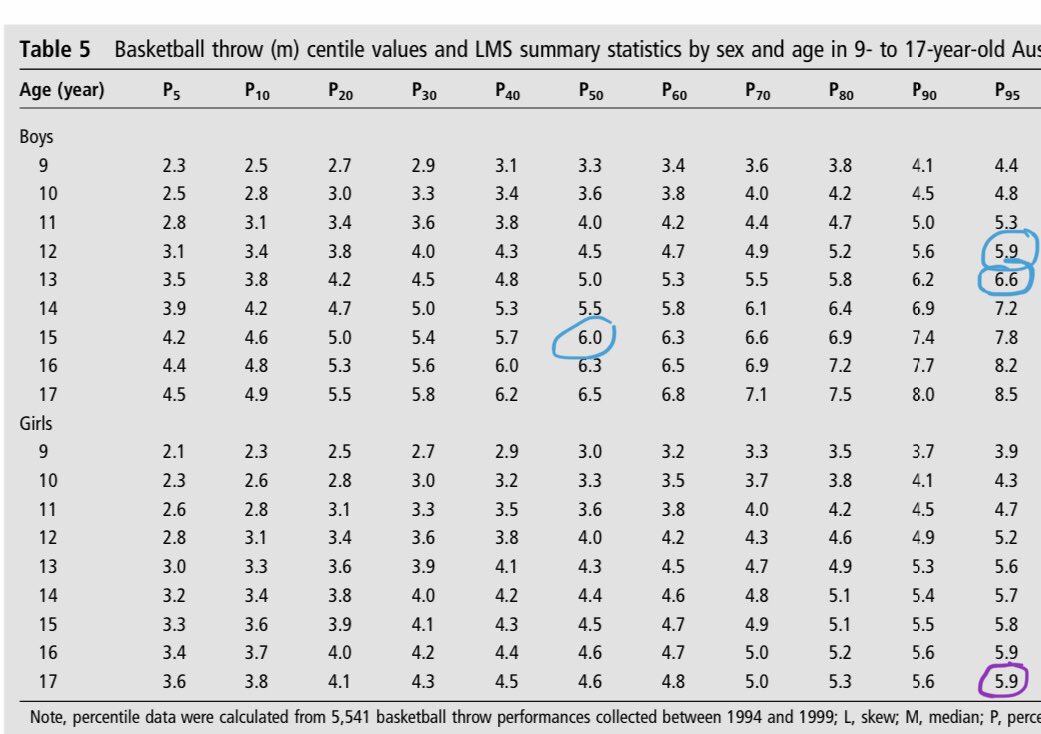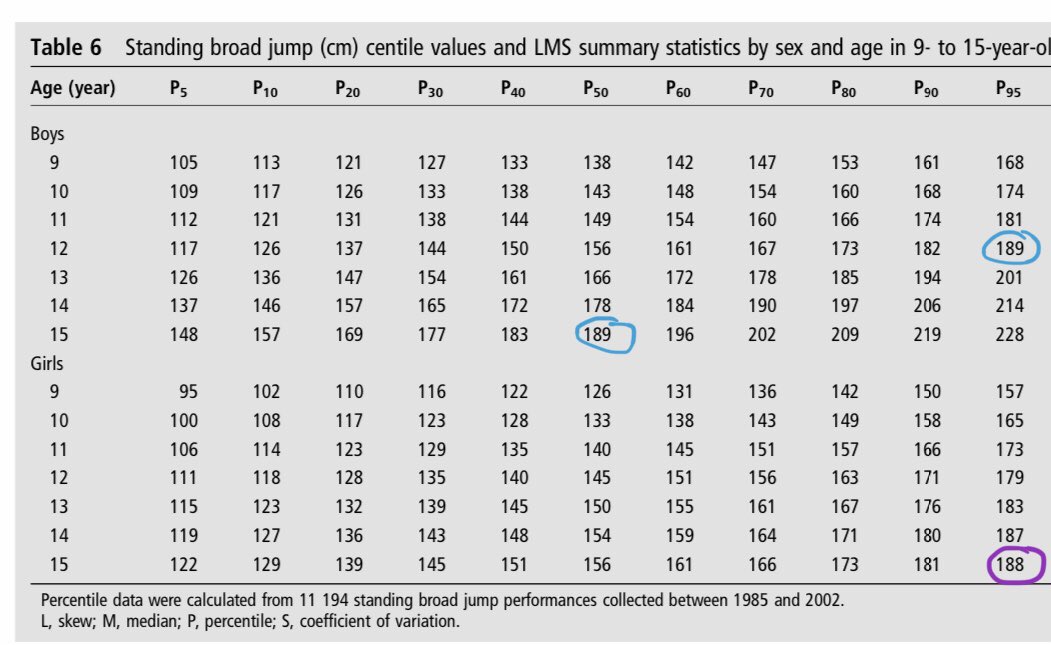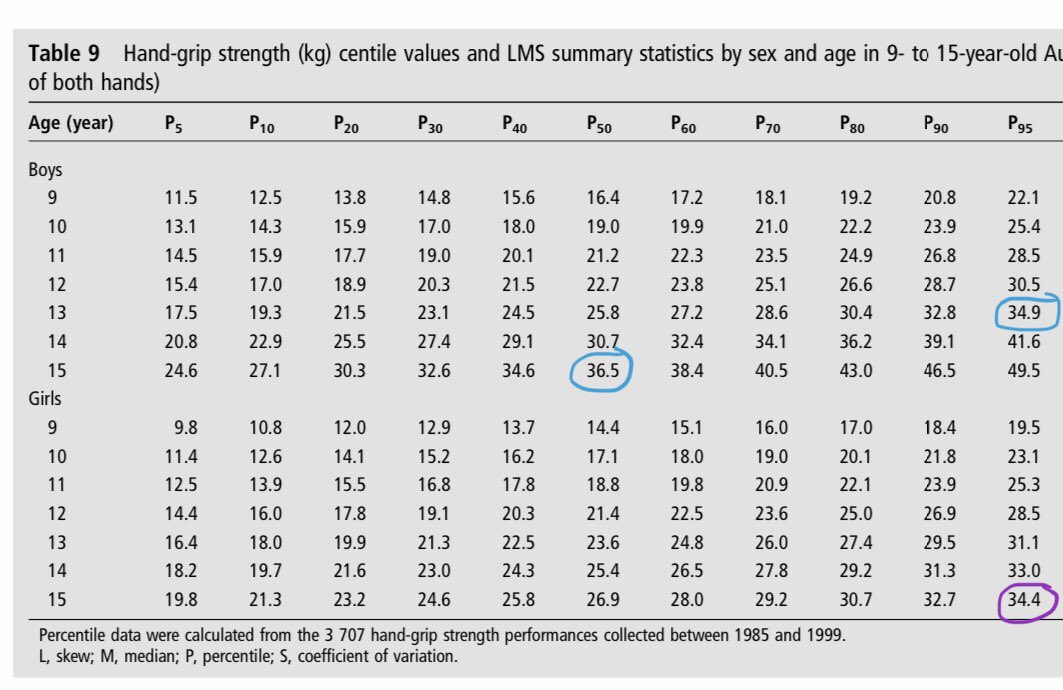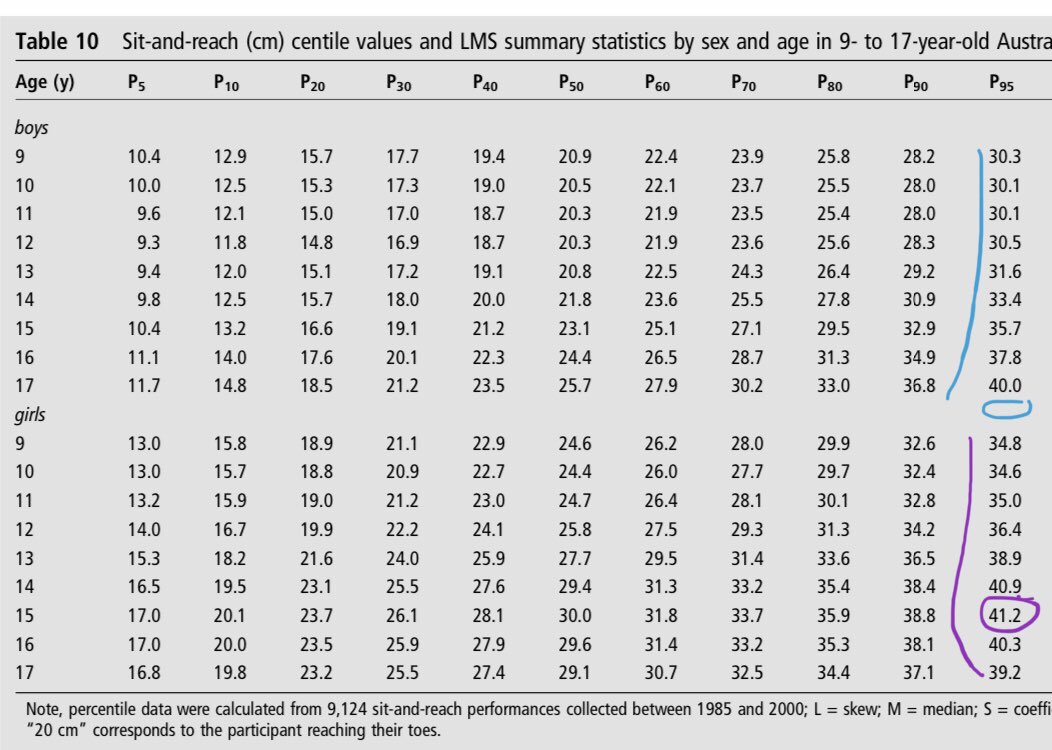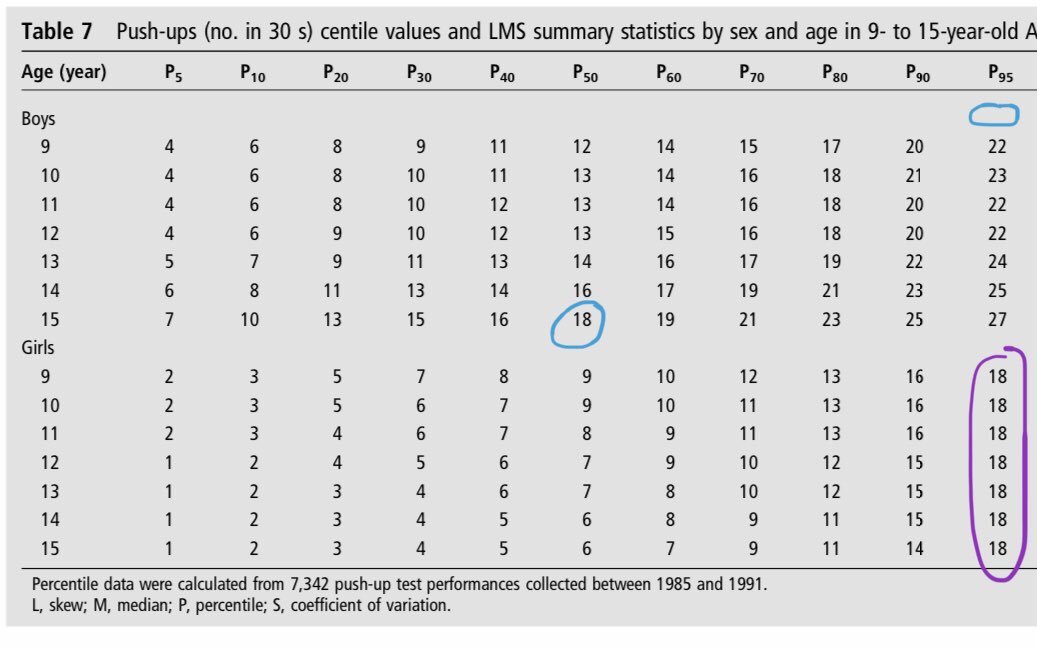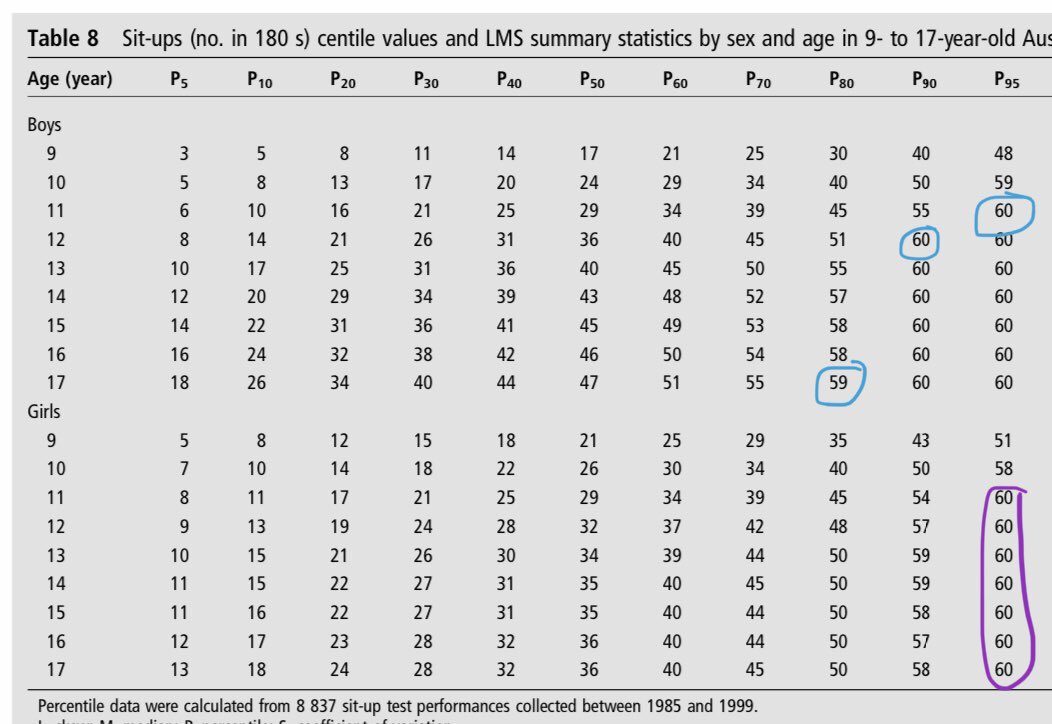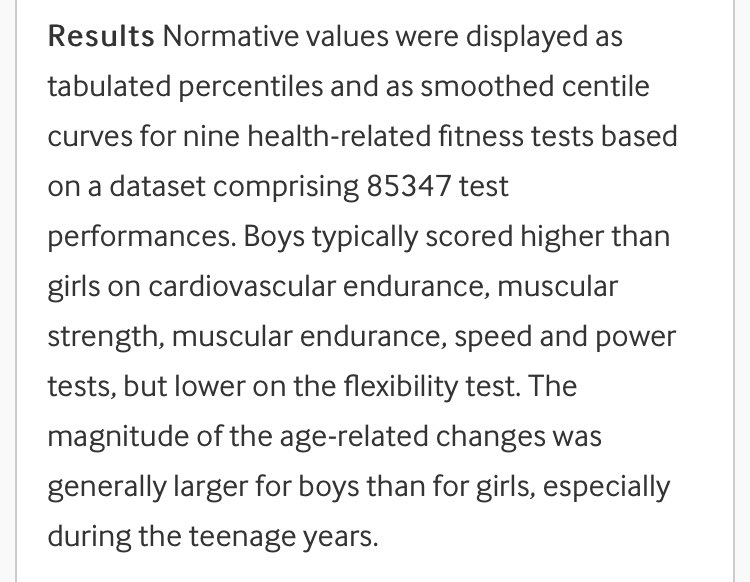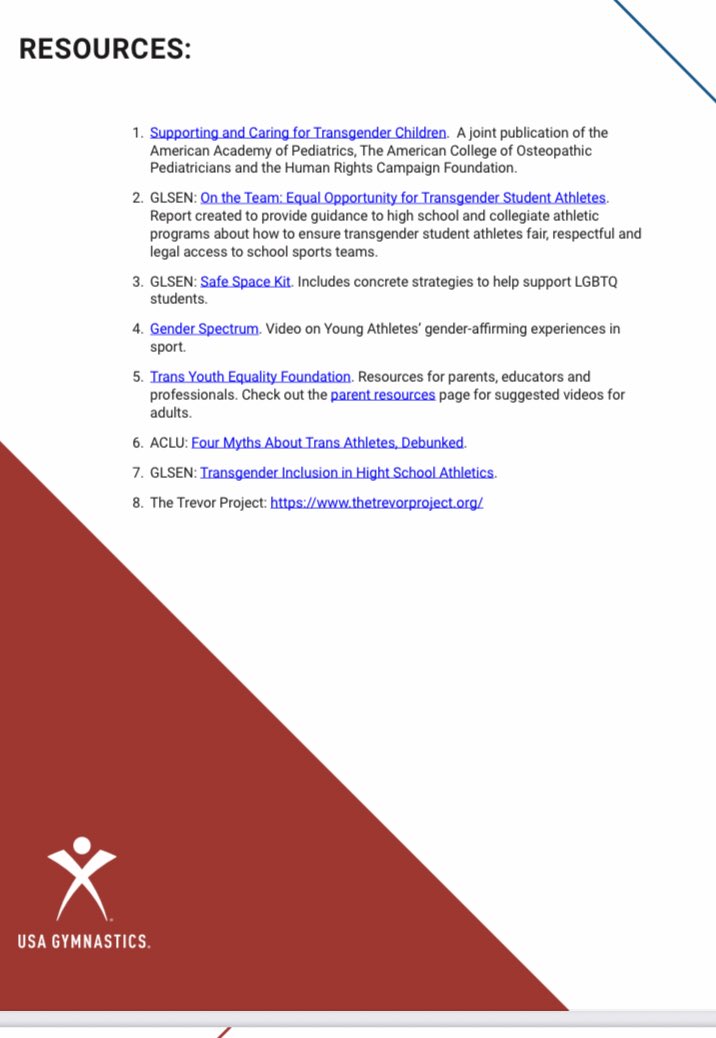Prompted by the release of USA Gymnastics @usagym trans policy.
Specifically, the implication that performance differences between children of either sex and of any gender identity are negligible, therefore inclusion of transgirls with females is fair.
Specifically, the implication that performance differences between children of either sex and of any gender identity are negligible, therefore inclusion of transgirls with females is fair.
Here is summary data from Catley and Tomkinson, 2012, who collated performance data from 85347 Australian schoolchildren aged 9-17 years old.
Source here (full text can be found on ResearchGate). https://bjsm.bmj.com/content/47/2/98.long
Test: 1.6km timed run (CV endurance)
The best 17 yr old girls are matched by average 17 yr old boys, and beaten, by some measure, by the best 9 yr old boys.
The best 17 yr old girls are matched by average 17 yr old boys, and beaten, by some measure, by the best 9 yr old boys.
Test: 20m shuttle run, reps/time (CV endurance)
The best 17 yr old girls are matched by both average 17 yr old boys and the best 10 yr old boys, and beaten by the best 12 yr old boys.
The best 17 yr old girls are matched by both average 17 yr old boys and the best 10 yr old boys, and beaten by the best 12 yr old boys.
Test: 50m timed sprint (muscular speed)
The best 15 yr old girls are matched by both average 15 yr old boys and the best 12 yr old boys.
The best 15 yr old girls are matched by both average 15 yr old boys and the best 12 yr old boys.
Test: Basketball throw, distance (muscular power)
The best 17 yr old girls are beaten by average 15 yr old boys, matched by the best 12 yr old boys, and beaten by the best 13 yr old boys.
The best 17 yr old girls are beaten by average 15 yr old boys, matched by the best 12 yr old boys, and beaten by the best 13 yr old boys.
Test: Standing jump, distance (muscular power)
The best 15 yr old girls are beaten by both average 15 yr old boys and the best 12 yr old boys.
The best 15 yr old girls are beaten by both average 15 yr old boys and the best 12 yr old boys.
Test: Hand grip (muscular strength)
The best 15 yr old girls are beaten by both average 15 yr old boys and the best 13 yr old boys.
The best 15 yr old girls are beaten by both average 15 yr old boys and the best 13 yr old boys.
Test: sit and reach, distance (flexibility)
The best 15 yr old girls beat all the best boys. However, the pattern shows that female flexibility decreases during late puberty, while male flexibility improves. At 17 yrs old, the best males are more flexible than the best girls.
The best 15 yr old girls beat all the best boys. However, the pattern shows that female flexibility decreases during late puberty, while male flexibility improves. At 17 yrs old, the best males are more flexible than the best girls.
You’ll notice I skipped a couple of tables. They require nuanced discussion, of a broadly similar nature.
Test: Push ups, reps/time (muscular endurance)
Test: Sit ups, reps/time (muscular endurance)
Test: Push ups, reps/time (muscular endurance)
Test: Sit ups, reps/time (muscular endurance)
Looking at the best performances for push ups and sit ups, the sharp plateaus in some data sets suggests that a test limit is being reached.
I see two options for the plateaus (happy to hear other suggestions):
1.Basic physics: for example, is it physically impossible for anyone to do more than 60 sit ups in 180s?
2.Test thresholds: that is, a target is set to be reached within time.
1.Basic physics: for example, is it physically impossible for anyone to do more than 60 sit ups in 180s?
2.Test thresholds: that is, a target is set to be reached within time.
Looking at push ups, it’s clear that basic physics hasn’t limited girls to 18 reps in 30s, because boys manage more just fine.
(In fact, the boys don’t plateau in this test.)
(In fact, the boys don’t plateau in this test.)
It seems unlikely that the best 9 yr old girls can do the same number of push ups as the best 15 yr old girls. I suspect a test threshold has been applied.
All we can say here is that average 15 yr old boys can meet the female limit even for the best 17 yr old girls?
All we can say here is that average 15 yr old boys can meet the female limit even for the best 17 yr old girls?
Looking at sit ups, which ultimately plateau in both sexes, it’s impossible to discriminate between a basic physics limit or a test threshold limit.
How fast can a person perform a sit up?
How fast can a person perform a sit up?
However, by comparison with the same types of tests in other settings - for example, armed forces fitness tests - it is entirely reasonable to assume there is a test threshold for both push ups and sit ups.
I would therefore question how good a measure of ‘muscular endurance’ these reps/time tests are. Would reps-to-fatigue (with some kind of interval limit per rep) not be a better measure?
Anyway, back to the point. The authors conclude that boys outperform girls in all tests except flexibility.
With that in mind, and with the understanding that this is just one of several large studies showing this pattern, I wonder where the idea that boys and girls are athletically much of muchness has come from?
Apparently, here.
Apparently, here.
A note: if there are any gymnasts out there who would like to raise concerns/objections with @USAGym, please contact me.

 Read on Twitter
Read on Twitter